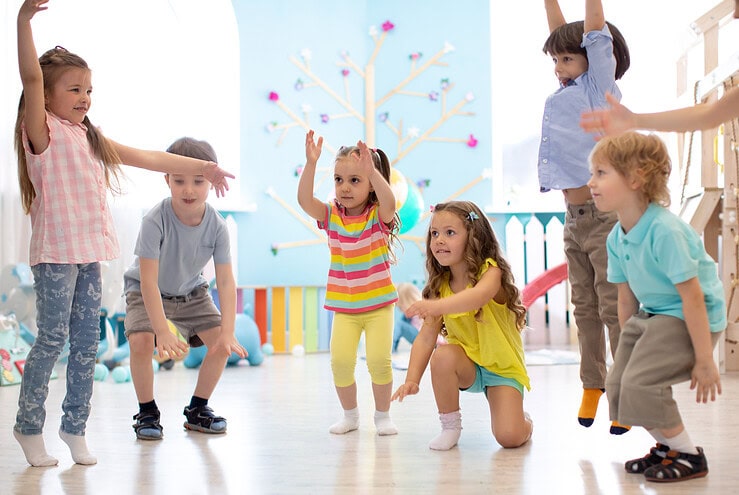How movement helps children learn
A simple dance game may improve preschoolers’ working memory

As any teacher will tell you, children benefit enormously from physical activity, both physically and academically. Many early-years educational settings schedule breaks for active play, recognising that children’s mood and behaviour tend to decline when they don’t move enough. This is something I have seen with my own children.
Movement benefits our cognition in numerous ways. In adolescents and adults, too, physical activity improves executive function. Executive function skills include attention, working memory, and self-control; they help us remember instructions, focus on several tasks in short succession, and filter out distractions. However, children differ hugely in their executive function abilities, which has implications for learning. Children with poorer executive function skills tend to perform worse at school, while advanced executive function skills support maths and literacy achievement.
“Preschoolers’ performance on an executive function task improves immediately after they play a simple 12-minute dance game.”
A new study has found that preschoolers’ performance on an executive function task improves immediately after they play a simple 12-minute dance game. The researchers divided 111 four- and five-year-olds into four groups: One group was encouraged to dance freely, a second group played a musical game while staying inactive, a third group took part in a quiet colouring activity, and the fourth group – in the test condition – played a game of “freeze dance”, or “musical statues” – dancing to music and then freezing when the music stopped.
The researchers suggested dance moves to this group of children, such as jumping, wiggling and foot stomping. During the first song, the children were simply told to freeze when the music stopped. In the next song, they danced fast when the music was fast and slowly when the music was slow. During the third song they did the opposite: dancing slowly to fast music and fast to slow music. The game is cognitively engaging because it requires children to think about moves, anticipate when the music might stop, remember the rules, and react appropriately.
The children then completed various executive function tasks, such as “spin the pots”, which required remembering the locations of stickers and empty boxes on a rotating tray. Another task involved sorting various items by shape and colour. The children who played freeze dance performed best at these tasks. There was no effect on a task measuring inhibition, though, perhaps because children scored fairly highly on it even before the game of freeze dance, which made differences harder to measure.
Marcia Preston from the University of Delaware, lead author of the study, wanted to find out whether a simple, fun, but cognitively engaging activity would help children learn. “Having that short intervention is really key,” she says. “It didn’t require a lot of equipment or expense; you can do it with a whole classroom.” She believes this type of intervention could be particularly helpful for children with lower executive function abilities, as the children who started with lower scores showed the most improvement after playing the freeze dance game.
“Children who started with lower scores showed the most improvement after playing the freeze dance game.”
It’s not clear how long the improvement might last. “The next step would be to do this as a longer intervention and see if there are long-term impacts,” says Preston. Nor is it clear whether there would be an impact on learning. Executive function training is most effective in the context in which it is needed. Thus improvement on a working memory task does not necessarily mean improvements on a maths task that requires working memory, for instance.
Still, this type of movement is fun and cognitively engaging, and it can be done anywhere. I’ll certainly include a dance game the next time I host a birthday party for my children.
